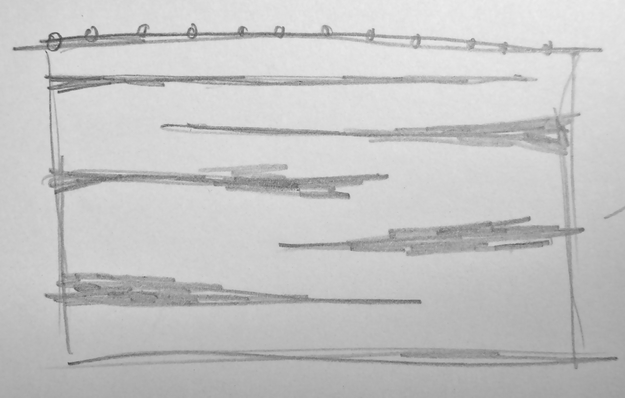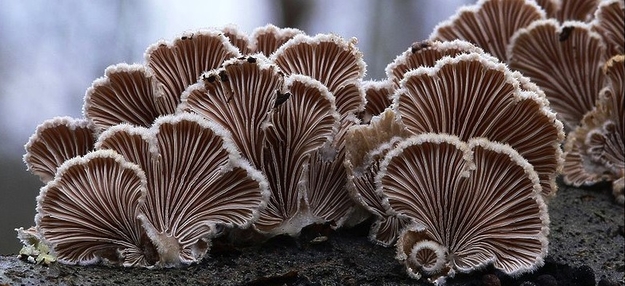At the moment the mycelium is used in a solid state. Because of my background in textiles, I am always looking for new ways of working with textiles. That is why I want to integrate mycelium into textile. So mycelium can have flexibility and textile can have improved properties. By exploring to what extent we can control the growth of mycelium, I would be able to give more or less flexibility to this combination. Can we manipulate the mycelium or the ground material in a way that it grows well in some places and does grow in other places? Could we use certain textile yarns as a nutrient medium and other yarns as a base material where the mycelium? Does it have to be a combination with a classic textile at the end or can it be a textile replacement with the insulating and moisture-absorbing properties?
textile_schizophyllum - textile inspiration for schizophyllum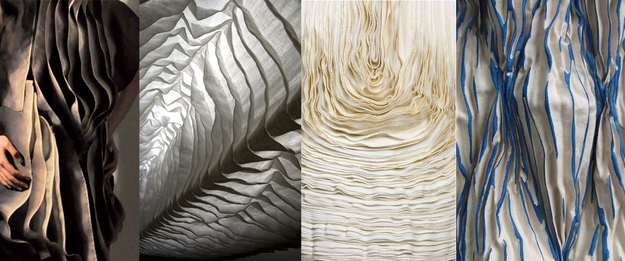
Proposal research of mycelium integrating into textiles:
- How does mycelium react on a polymer, cellulose (cotton, jute, …) and protein (wool, silk, …) based textile, where does it grow (better) and can we exclude or add certain properties.
- Can we use a textile combining different yarn qualities so that the mycelium has a nutrient medium in certain areas and a ground material in other areas? For example a warp of polymer and a weft combining polymer and protein?
- 3D textile; grow mycelia in between 2 layers of textiles which are attached at certain positions (think sleeping bag alike). A combination of ground materials could be of interest, for example a top layer of polymer and a bottom layer of cellulose. Could one side have grown moisture-absorbing properties and the other side moisture resistant?
- Does it need to still have a textile base or can the mycelium be the textile and functions the textile material just as a nutrient medium?
- Can we increase the moisture absorbing capacity?
- What thickness do we need to still make use of the insulating properties of mycelium?
- What happens when the mycelium continues to grow on the textile? Do we need to stop the growth at a certain point?
textile_look - inspiration for using mycelia on different yarns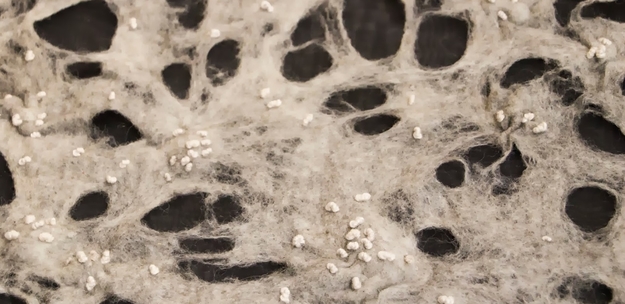
Potential ideas (depending on outcome research):
- Curtains, wall coverings, panels with an insulating function for use in drafty places like houses, tents, etc.
- Blanket or carpet
- Eye catching home textiles, which function as a moisture absorber in damp places.
I think mycelium can also improve the sound absorbing properties of textile, which can be of use in large areas.
spacer-fabric - double layer fabric where mycelia could grow inbetween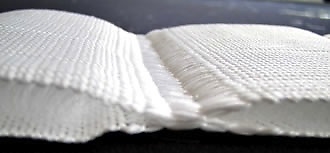
mycelium_curtain - Idea for pattern growth of mycelium on a curtain